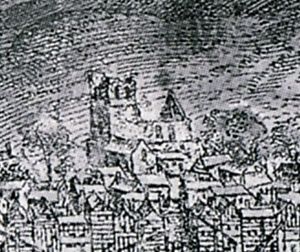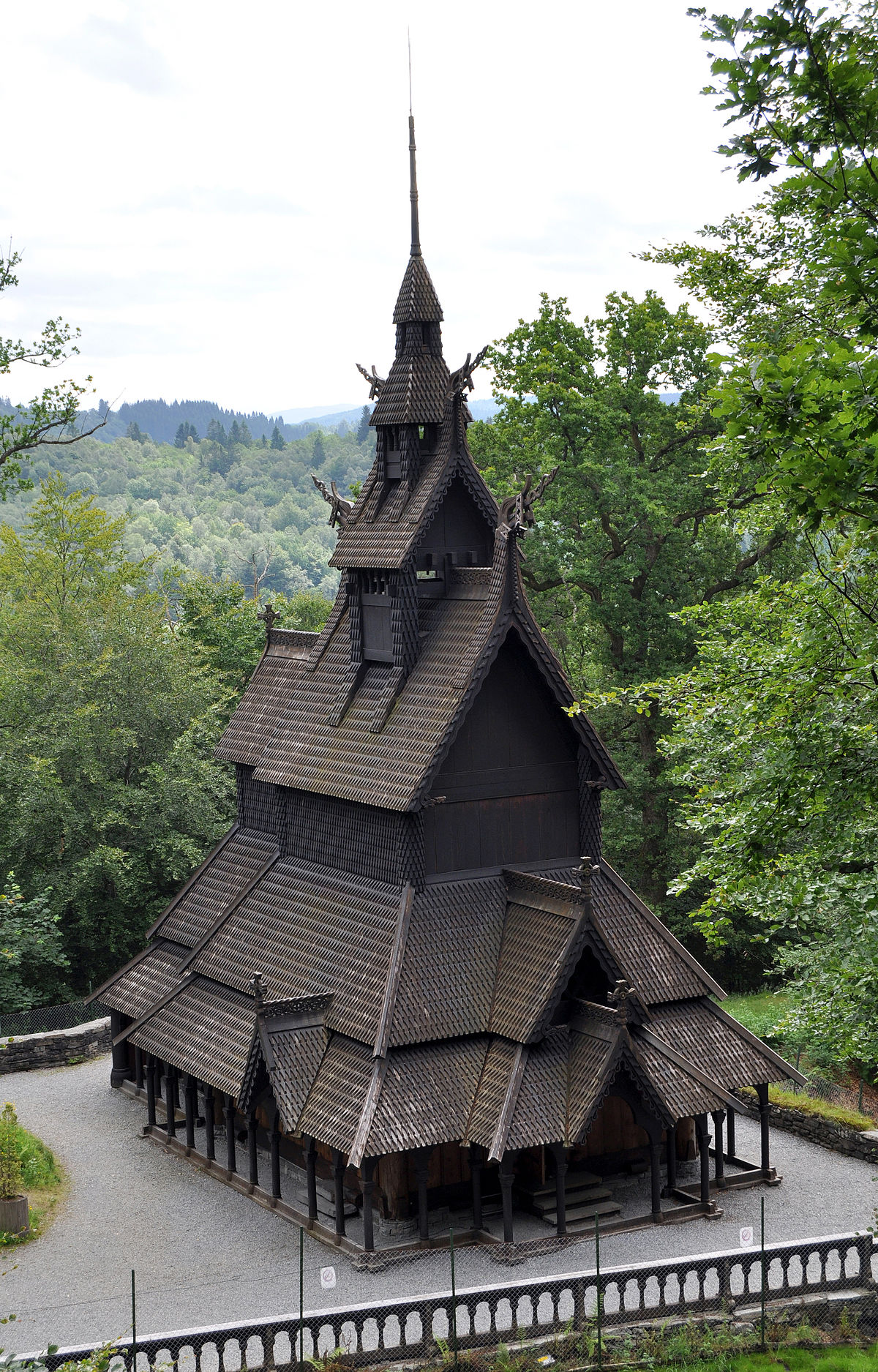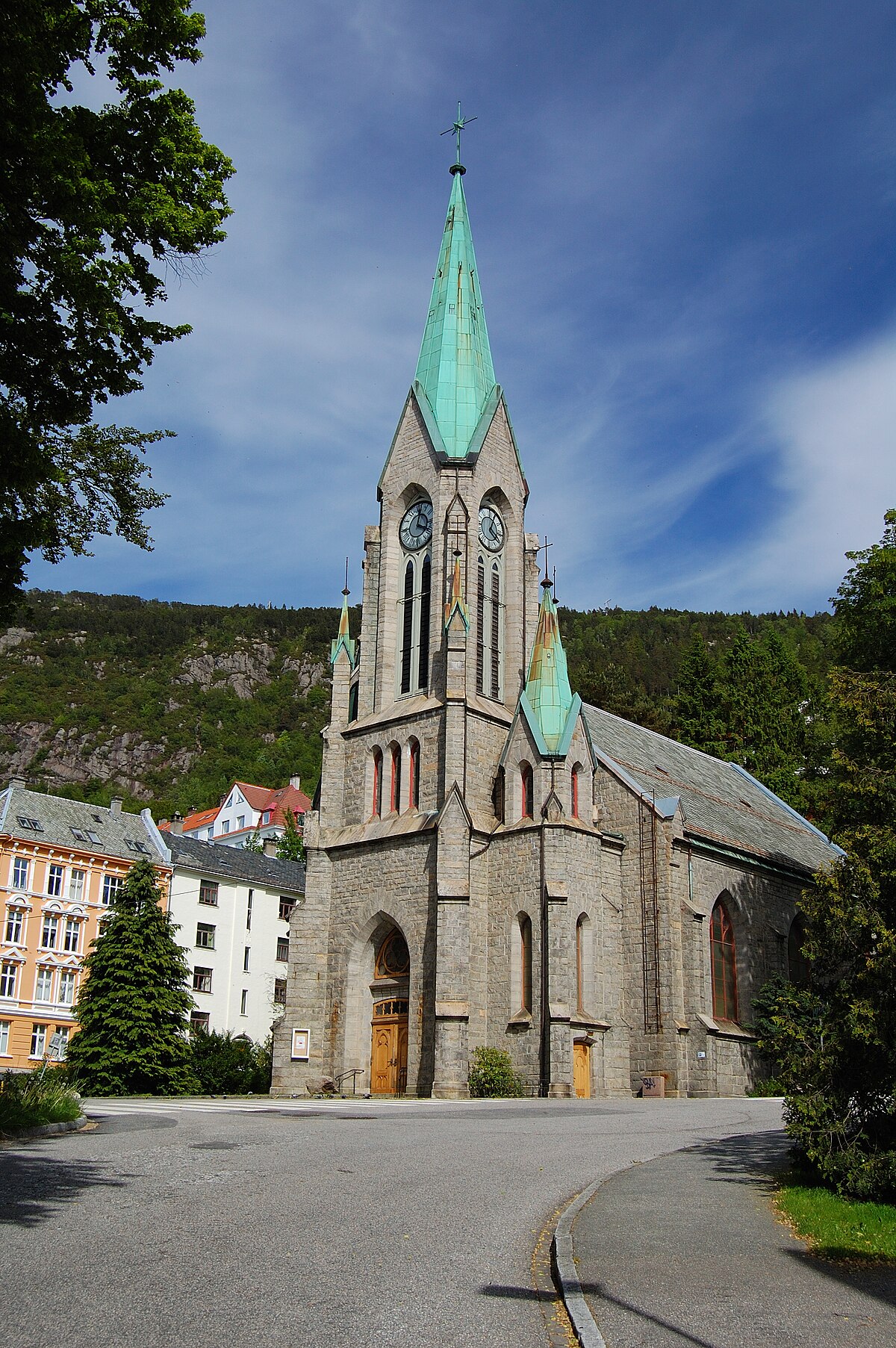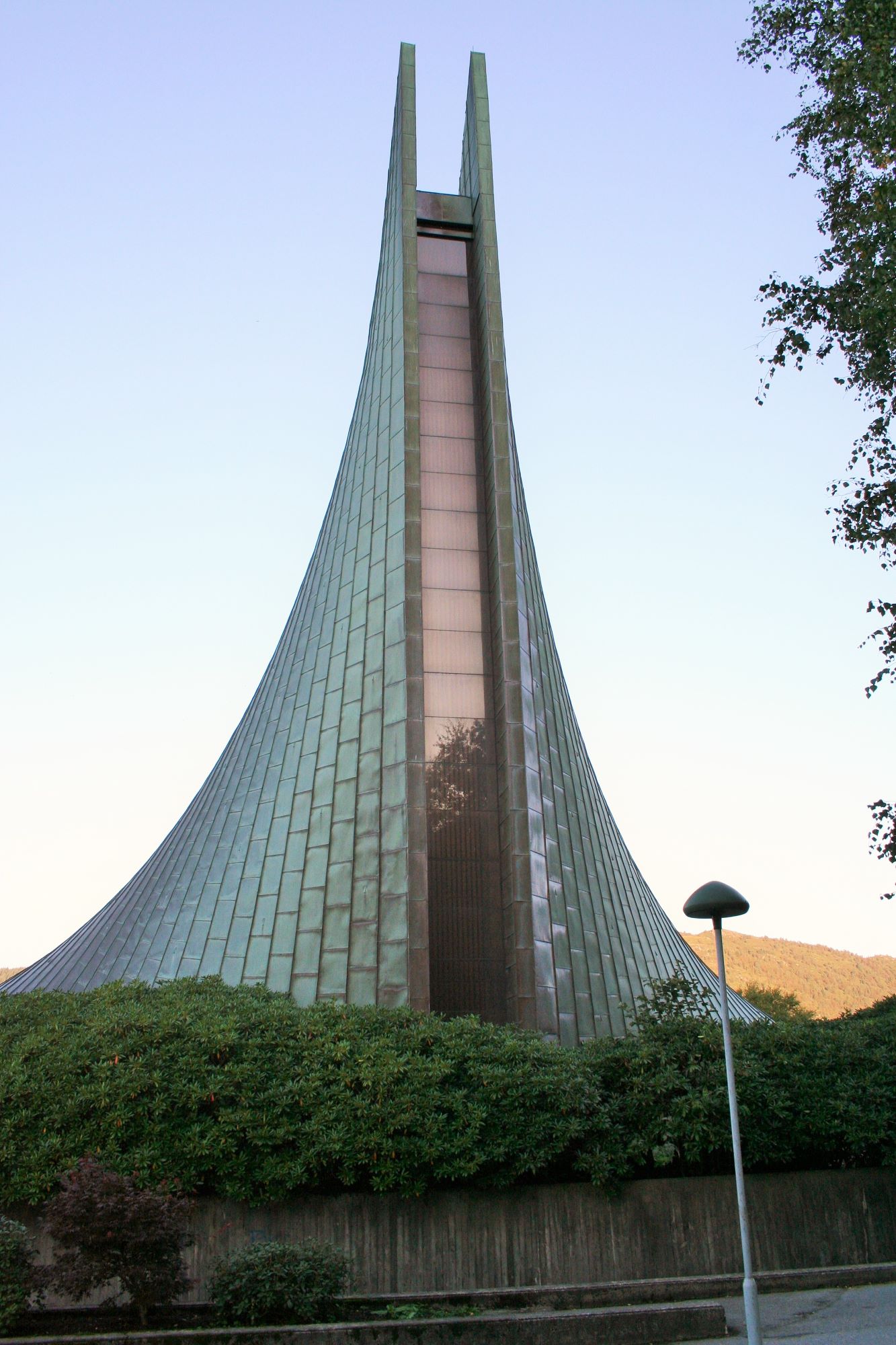Following in the Footsteps of Edvard Munch in Vågå
- 0 comments
- by Emma
Following in the Footsteps of Edvard Munch in Vågå
When on a road trip through Norway, it’s worth trying to stop in as many small towns as possible. Each one is unique in their way, and each one has some treasures to uncover. Vågåmo, or Vågå, is on the E15 highway that links you between Oslo and Geiranger in the summer months, via the famous Lom village and close to the Sognefjellet Scenic Road. Vågå is one end of the Valdresflye Scenic Road, which gives you a close look at the Jotunheimen National Park. Vågå is well known for its wealth of outdoor activities, but they aren’t for everyone. If you’re looking for something a little different, you can do the Edvard Munch self-guided walk.
In this article...
Edvard Munch & Vågå
Yes, Edvard Munch is linked to Vågå. Edvard is, of course, Norway’s most famous painter. He is so famous that they’ve rebuilt the Munch Museum in Oslo as this dominating skyscraper over the city skyline. It is officially the largest building dedicated to one artist. Norway is proud of Edvard, that much is clear. But Edvard isn’t exclusive to Oslo; in Vågå you can find sites that draw connections to the famous artist. This is because his family is from Vågå.
When walking through Vågå, you’ll get to learn about Edvard’s interest in his heritage, plus what the Munch’s did here. His father’s side came from Vågå, and when Edvard was a young man, he came here to learn more about his ancestry. He maintained a close relationship to Vågå throughout his life and visited several times.
When I visited Vågå after finishing the Valdresflye Scenic Road in September 2020, I did the Edvard Munch self-guided walk. I’ll be honest, I find the town’s connection to Edvard Munch a little thin. Still, I love the town for its history and heritage. Through Edvard Munch, they’ve made a real effort to preserve their old buildings and the stories of his ancestors. That’s the part I loved about this walk; getting to learn about real people who lived here and see the old buildings. The walk is an excellent overview of Vågå, so even if you aren’t interested in Edvard Munch it’s well worth doing.
In this article, I’ve included information about both Vågå and Munch’s connection to Vågå. It’s a short walk – 1.3km – so if you find yourself in Vågå, I recommend taking the time to explore the town.
The Munch connection to Vågå
Edvard Munch was born near Hamar, but his parents came from Kristiania (Oslo). To find his connection to Vågå, we have to go back to his grandparents and great grandparents on his father’s side, who lived in the town.
Christine Munch
His great grandfather was Peder Sørensen Munch, who was a pastor at Vågå Church. Sadly there isn’t much information on him today, but his wife is much more known. She was Edvard’s great grandmother, and her name is Christine Storm Munch. She had a herb garden at the Ullinsvin vicarage. Christine is the main family member you’ll hear about on the walk. The audio guide is even based on her stories.
Christine (1747-1825) was a well-known knowledgable and accomplished woman. She governed Ullinsvin in the last part of the 18th century. Christine grew and collected healing herbs and spices in the vicarage’s garden. She was well known for helping sick villagers with her natural remedies. Before cookbooks were common, she wrote hundreds of pages of recipes.
Another well-known Munch is Edvard Storm (1749-1794), the half-brother of Christine. He grew up at Ullinsvin and wrote folk songs in the Vågå dialect. They are still sung by folk singers today. He is a famous poet and many of his poems are characteristic of Norwegian national romanticism.
Edvard's Interest in Vågå
Why the interest in Vågå? Edvard suffered a lot of loss in his family when he was growing up. That likely piqued his interest in learning about his ancestors. His father had told him stories about his family in Vågå. The town was considered a key place for the family on his father’s side. Everyone in the family felt a need to visit Vågå Church and Ullinsvin vicarage. So, Edvard did. He visited first as a young man and returned several times throughout his life. It’s believed he drew inspiration from the landscape as well as some of the paintings in Vågå Church.
Vågå Church
Vågå Church is the first stop on the self-guided walk. The walk begins in the town square, where you’ll see a large ‘The Scream’ poster that you can pose in! Still, I’ll begin my guide with the church.
There’s a lot of misinformation online about the church. Many tourism websites define the church as either “one of the oldest wooden churches in Norway” or as “one of the oldest stave churches in Norway”. Neither is true.
Vågå Church was built in the 17th century, using parts of a stave church that was considered one of the oldest stave churches in the country. However, today Vågå Church is not built in a stave style and thus not classified as one of the 28 remaining stave churches in Norway. Still, don’t let this put you off visiting! Stave elements are remaining, and the church is gorgeous.
History of the church
Vågå has been populated for a very long time. Vågå is mentioned in the Old Norse sagas when King Olav (later Saint Olav) travelled through the region. He called all the villagers to a meeting, and told them if they didn’t convert to Christianity, he’d burn their houses and farms down. Most of the villagers converted to Christianity.
It’s believed the site where Vågå Church is today used to be a pagan temple. There was likely a stave church on the site around 1030, a few years after King Olav forced everyone into Christianity. The stave church would’ve been a symbol of the dominance of the new religion over the old, though stave churches did use pagan symbology. If Christianity didn’t work out, they could use the church as a pagan church.
A new stave church was completed on the site around 1150, and this is widely regarded as one of the oldest stave churches in the country. It was not the only stave church in the village; there were several scattered throughout the village.
A new church for Vågå
By the early 17th century, the population of Vågå had become too large for the stave churches. So, a decision was made to tear them down and make one large central church. Between 1626 and 1628, Vågå Church was built. It is a cruciform church and, while the construction technique is like stave churches, the church does not have staves. Because of this, it is not classified as a stave church.
Still, there are elements of stave churches on this church. The several previous stave churches had good timber, and some of this is in the construction of Vågå Church. Many of the wall surfaces have the old decorations from the stave churches, especially the portals.
The basic architectural plan is a Latin cross. The construction was done under the direction of Werner Olsen (1600-1682), who is famous in Gudbrandsdalen for his renovation work on stave churches. He later worked on the remodelling of Lom Stave Church and Ringebu Stave Church. His ‘trademark’ is the octagonal bell tower with four small spires in each corner. This type of spire is known as the “Gudbrandstalen type”. Olsen worked to incorporate elements from the stave churches into the new church.

Interior Decorations
There are some richly decorated items inside, some from the original stave church. For example, the baptismal font is from the 12th century and is the church’s oldest inventory. The pattern corresponds to a pattern found on a Viking ship. It was likely brought over from Ireland by the Vikings. Another old item is the crucifix, from the mid-13th century. It’s in the Gothic style.
The pulpit and altarpiece are from the rebuilding of the church. The organ is from 2002 and has 1200 pipes.
Cemetery
The most famous grave in the cemetery is of Jo Gjende. He (1794-1884) was famous in Norway as an outdoorsman and freethinker. He was born in Vågå and grew up on a farm, which he later inherited, but he ended up living in the Jotunheimen mountains on a mountain farm. Jo became known for his reindeer hunting and sharpshooting. Eventually, he became a vocal sceptic of Christianity, instead, he believed in natural philosophy. For this, he became known as a freethinker. It’s believed that Henrik Ibsen used Jo Gjende as a model for Peer Gynt.
You will also see some of the Munch family graves here, such as Edvard Storm.
Vågå Church Visitor Info
The church has its own website, which you can view here. It’s only in Norwegian, but has a page for tourists. As of writing, there’s no info on opening hours.
Ullinsvin Vicarage
Ullinsvin vicarage is a short uphill (but not steep) walk from the church, and the views along the way are incredible. Once at the vicarage, you can walk around the gardens for free. There’s a café here plus a gallery.
Ullinsvin is an old vicarage with a total of 13 buildings. The old garden has a herb garden, rosebeds, mountain gardens and various trees and shrubs. The Munch family lived at the vicarage for over 80 years, and Christine became famous for her herb garden here. Sadly the original location of the herb garden is unknown, though thanks to her recipes they have been able to replant some of her herbs.
You can take a break at Ullinsvin at Café Edvard, where they have created a menu around Christine’s old recipes.
Jo Visdal was a close friend of Edvard Munch from adolescence and for the rest of their lives. They met when they were both studying at the Royal College of Drawing. Jo Visdal created the bus of Edvard Munch you can see in the garden. The bust shows Edvard Munch as a young man, and it is the only bust made of Edvard while he was alive. It was made in 1886. Jo Visdal is from Vågå.
Up-to-date visitor info is found on their website, but it’s only in Norwegian. Click here.

Jutulheimen Bygdemuseum
The last stop on the walk is the museum all about life around Jotunheimen National Park.
The museum contains a collection of houses from the 17th, 18th and 19th centuries from various farms in Vågå. In summer, you can have a guided tour through the museum. There’s an old portal that’s connected to the folktales of Asbjørnsen and Moe, Norway’s most famous fairytale writers. There are some interesting interior exhibitions, too. One exhibition focuses on the impact of World War II on Gudbransdalen, while another is about Jo Gjende, the reindeer hunter.
Up-to-date visitor information can be found on their website (click here).
Practical information
Edvard Munch self-guided walk
The self-guided walk has its own website, which you can view here. The website includes the audio you can listen to at each stop, though it’s only in Norwegian. There’s also a ton of info in English about Munch and Vågå. I used the website as a resource for this page. https://www.munchivaga.no/english/















































































